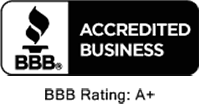MN Wild Animal Management MN | Deer Mice
The deer mouse, Peromyscus maniculatus, often referred to as a white-footed mouse, is the most abundant and widely distributed mammal in North America. A member of a large group of species and subspecies of the genus Peromyscus, deer mice are very proficient jumpers and runners that received their name due to their agility.
The deer mouse is about six inches long from the nose to the tip of its tail. It is grayish to light brown on top, with large ears, a white belly, and a furry tail that is white on the underside.
Deer mice are a particular concern because they spread hantavirus, which can be deadly to people. Because deer mice prefer forests, grasslands, and agricultural crops, they aren’t normally found within urban and residential areas unless fields, forests, or other suitable habitats surround those areas.
Damage
Because of their small size, deer mice can gain entry into many buildings and often enter vacated homes, cabins, and other structures where they build nests and store food. However, deer mice aren’t common in urban and residential areas unless large or numerous parks and/or fields are nearby. Deer mice damage upholstered furniture, mattresses, clothing, paper, or other materials they find suitable for constructing their nests. Nests, droppings, and other signs left by deer mice are similar to those of house mice. However, deer mice have a much greater tendency to cache food supplies such as acorns, seeds, or nuts than do house mice. This may help in the identification of the species of mouse responsible for the observed damage.
Disease
Hantavirus
The deer mouse came to the attention of the public when it was discovered to be the primary reservoir species for hantavirus. Hantavirus Fact Sheet
How are people exposed?
Deer mice excrete the virus in their urine, saliva, and droppings. A person may be exposed to hantavirus by breathing contaminated dust after disturbing or cleaning rodent droppings or nests, or by living or working in rodent-infested settings.
Pets, snakes, and predators don’t become infected and can’t spread hantavirus infection to people or other animals.
In North America, there is no evidence that the disease spreads from one person to another.
Lyme disease
A recent study in British Columbia, of 218 Deer mice showed that 30% (66) were seropositive for B. burgdorferi,the agent of Lyme disease.
Other diseases
Ehrlichiosis and babesiosis are also carried by the deer mouse.
Even people who cherish wildlife will recognize the enormous amount of damage, not to mention frustration, animals can cause. In our area, we see a lot of damage to property from animals such as moles, voles, gophers, and rabbits. They may be little, but they can sure wreak havoc on your garden and all the hard work you’ve put in to your property. If St. Patrick can drive the snakes out of Ireland – well, we can drive the unwanted critters out of your property!!




